Value in Art – In-Depth Guide with Examples and Overview
Value in art is among the several art elements that are used to help artists create visually appealing, harmonious, and striking compositions in art. Learning about value can greatly shift the way you approach your preparation processes when creating art and will certainly give you a new perspective on how you understand the power of value in influencing color and perception. In this article, we will discuss what value is, show you several examples and also guide you on how to use it for your art.
What Is Value in Art?
In this article, we will be examining one of the most important elements of art that has the power to establish a strong visual composition in your artwork. Value is one such element that relies on one’s understanding and application of the value scale and its relationship to color theory.
It is closely linked to color and forms part of one of the characteristics of how color can be applied in artworks. Before we go further into value as an element of art, let us provide more context on how it relates to color. To do this, we will briefly review what color is and then look at the role of value as an art element.
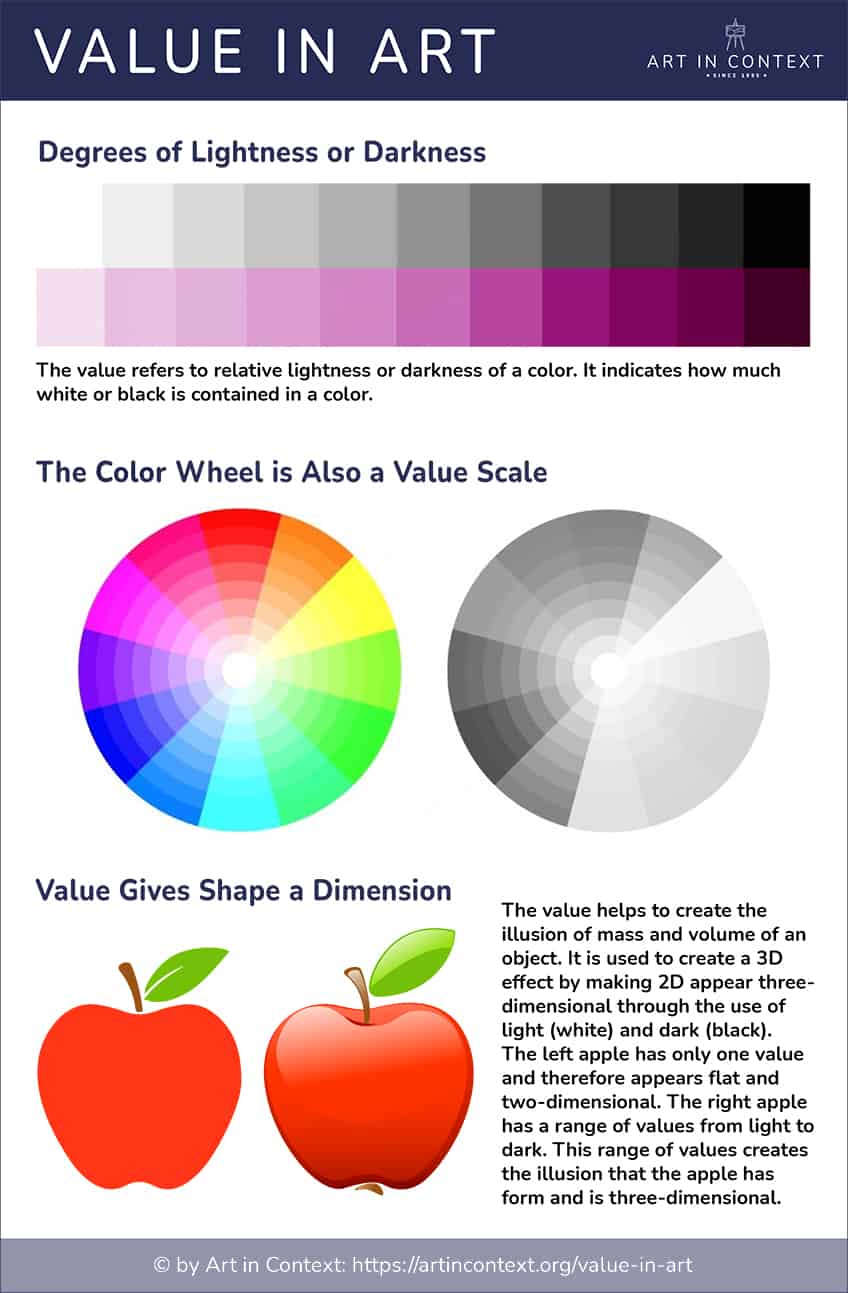
Where Color and Value Meet
Colors can be applied in a myriad of ways to produce different effects in artworks, from faint, dull, bright, blurry, sharp, textured, contrasted, bold, naturalistic, and abstract effects, colors make us “feel”. By learning more about color theory and its relationships with the value scale in terms of creating harmony between dark values and light values, one can truly harness the power of value. What determines these kind of visual effects in color and value?
These include the degrees of saturation or intensity, which relates to how “bright” or “dull” a color is. Color temperature is another aspect of color, which involves how cool or warm a color appears, as well as the mood created. Additionally, color tones, tints, and shades, refer to the addition of gray, white, and black to a color, which can influence the value of your artwork.
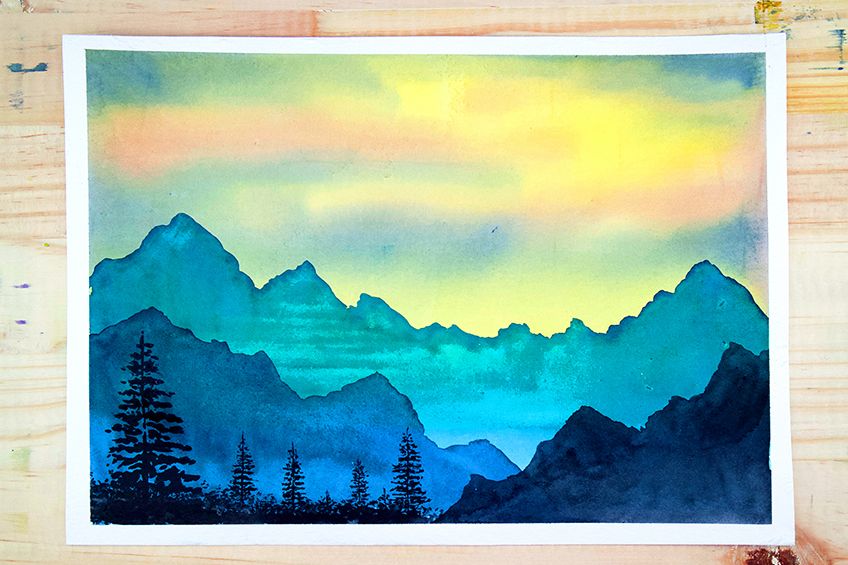
Finally, color schemes that incorporate the primary, secondary, and tertiary colors can also be useful when determining the kind of impact or effect you want your artwork to relay. As such, artists may choose to use either a limited or wide range of values to achieve a specific effect, or alternatively, opt for different values from a single hue.
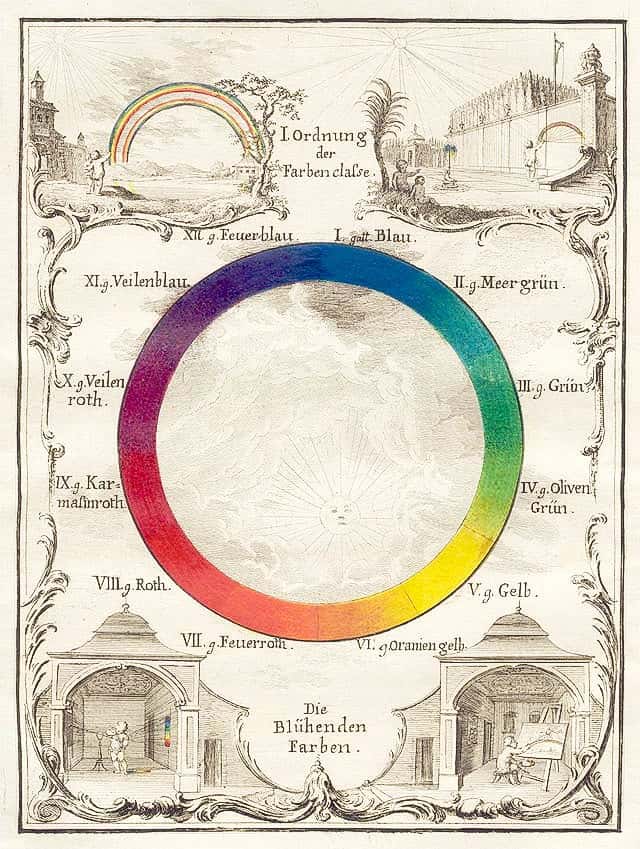
Ignaz Schiffermüller’s attempt at a color system (Vienna, 1772), plate I; Moses Harris, The Natural System of Colours and Ignaz Schiffermüller, Versuch eines Farbensystems (Vienna, 1772), plate I, Public domain, via Wikimedia Commons
One of the most important points to understanding color and its collaboration with value is that there is a science to color. Color is shaped by light waves that reach our eyes, which contain specific photoreceptors that allow us to see the spectrum of “visible light”, as it is often referred to.
This spectrum of light consists of different hues such as red, orange, yellow, green, blue, indigo, and violet. Some colors are also either absorbed or reflected.
Value as an Element of Art
Value as an element of art determines the lightness or darkness of a color, which can be confused with color intensity or color saturation. For example, a low-intensity color could appear lighter because of its dullness, while a high-intensity color could appear darker because of its brightness. However, this is not quite the same as value in art, although the two concepts seem similar.
Color saturation is commonly described in terms of the “pureness” of a color and if it has been mixed with neutral colors like white or black, which will make it appear “muted”.
For a better understanding of how value works in art, many art sources suggest imagining a grayscale or a gradient of colors that progress from lightest to darkest or darkest to lightest.
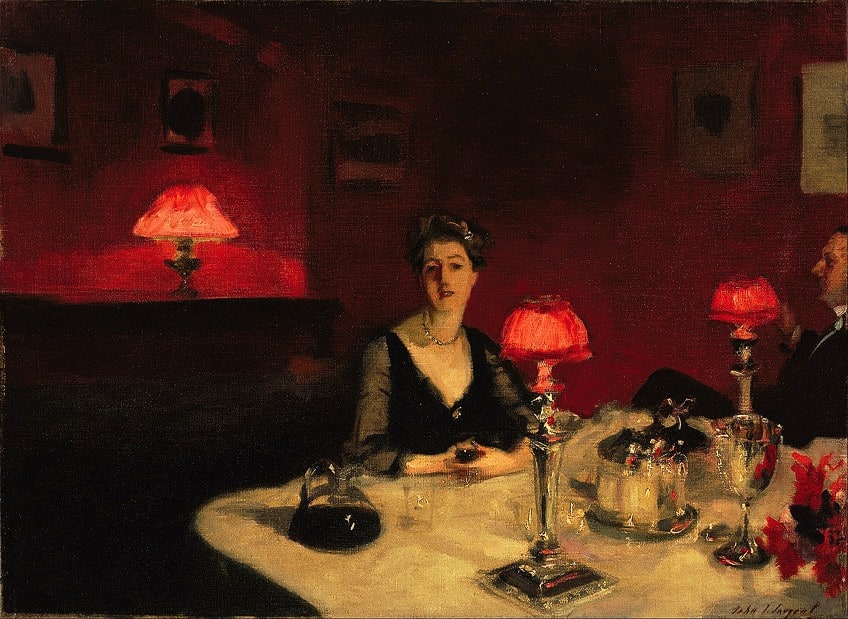
A Dinner Table at Night (1884) by John Singer Sargent, located at the Fine Arts Museums of San Francisco, United States; John Singer Sargent, Public domain, via Wikimedia Commons
On the grayscale, you will notice the color gray with white and black hues at each opposite end. These are the different gradations from darkest to lightest and vice versa. Value is also affected when a color has been mixed with white which is called a “tint”, and black which is called a “shade”.
On the grayscale, the lightest, or whitest, tints are termed “high-key” color ranges and the darkest, or black, are termed “low-key” color ranges. The grays in between are termed “mid-range” or “middle-key”.
An example of the low-key value in art includes the often referred-to “A Dinner Table at Night” (1884) by John Singer Sargent.
This composition depicts a room with two people sitting at a table. The room is dark with only three lit lamps with reddish lampshades providing the light. The walls are also in a red shade and, together with the lamps, create a cozy and warm ambiance.

Waterloo Bridge, Sunlight Effect (1903) by Claude Monet, located at the McMaster Museum of Art in Ontario, Canada; Claude Monet, CC BY-SA 4.0, via Wikimedia Commons
In this composition by Sargent, there are also various off-white and lighter (high-key value range) areas like the tablecloth and items on the table. These contrast with the deeper-hued areas, especially the shadows in the background, the black on the figures’ clothing, and the dark port in the decanter.
High-key value in art is illustrated by some of the paintings of Impressionists like Claude Monet, who is also often referred to in teachings about value in painting.
An example of Monet’s use of value in painting includes his Waterloo Bridge, Sunlight Effect (1903). This is one of the versions from his Waterloo Bridge Series, which he painted between 1899 and 1904. Monet depicted the Waterloo Bridge in different conditions, notably in the fog. He utilized light colors to convey light and atmospheric effects. Some of the colors are described as” soft” and “pale”, which include blues, purples, and pinks, among other hues like yellow.

Military Camp (1918) by John Singer Sargent, located in the Metropolitan Museum of Art in New York City, United States; John Singer Sargent, CC0, via Wikimedia Commons
Another important point to remember about utilizing value and the types of “keys” as some describe them is to be aware of their placement in a painting and the purpose of having a high, low, or middle key value. If there is too much or too little of a high or low-key value, it could create an unbalanced composition.
A painting that has a dominance of middle-key value can also appear more balanced and harmonious in its color scheme.
An example of a painting that appears to be more middle key is John Singer Sargent’s watercolor and graphite Military Camp (1918). In Sargent’s painting, there are no distinct dark areas, rather, his use of dark values are strategically placed in the shadows of the trees and coaches.
What Is the Purpose of Value in Art?
Value becomes an important element in art such that it adds a different kind of value to any type of artwork. It creates various effects such as highlights and shading, which provide more depth and three-dimensionality to artworks like paintings or drawings.

Some of the best value in art examples that create strong visual effects using highlights and shadows can be seen in Albrecht Dürer’s drawings and engravings.
Examples include the renowned engraving of The Four Horsemen of the Apocalypse (1498), Adam and Eve (1504), and Saint Jerome in His Study (1514). In each of these engravings, we see Dürer’s great skill in creating tonal contrasts using light and dark areas that give the composition life and a sense of movement. The background appears darker from the engraved lines to denote a foreboding background, with the horsemen emerging into the scene fast and strong.
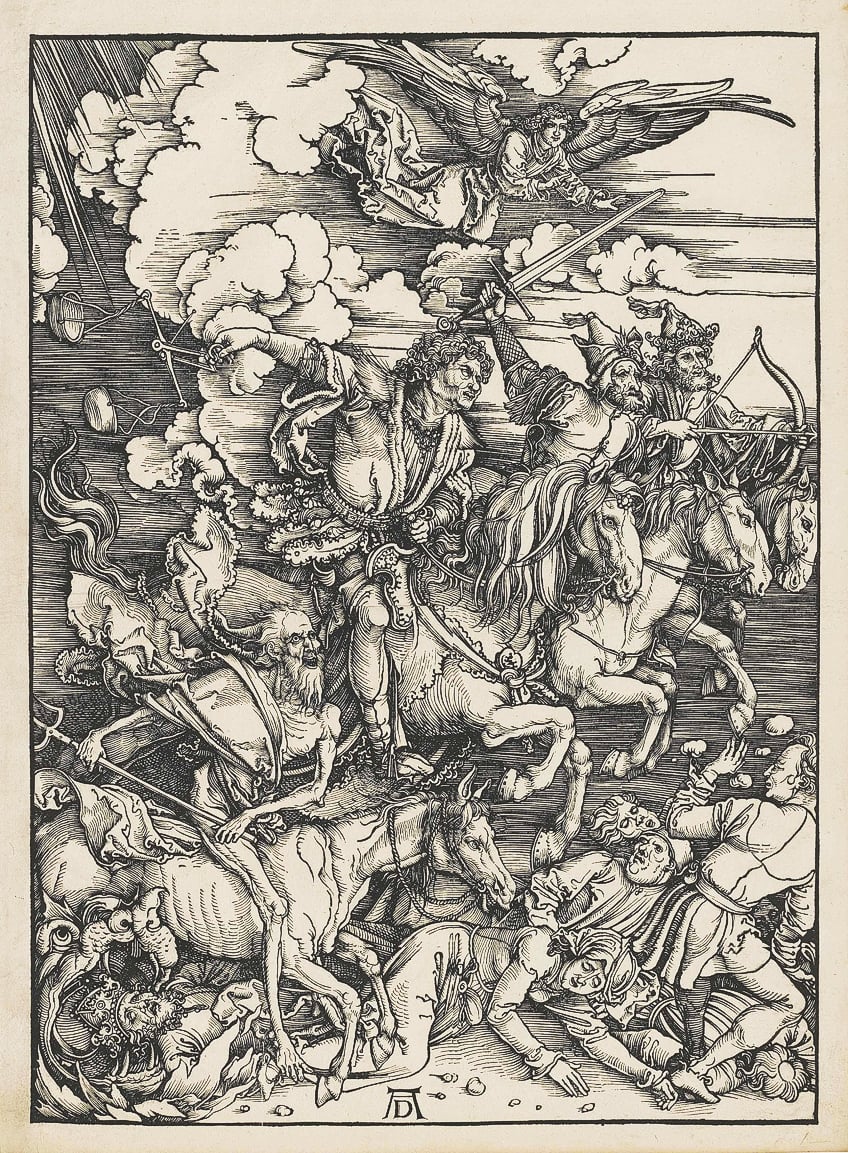
The Four Horsemen of the Apocalypse (1498) by Albrecht Dürer; Albrecht Dürer, Public domain, via Wikimedia Commons
We see the clouds behind the four horsemen are also lighter and contrasts well with the shadows. Dürer also created these contrasts throughout the subject, for example, the delicate shading between the folds in some of the figures’ clothing and the horses’ musculature. Value is accentuated here with the assistance of lines, which is another key art element.
Value in art does not stop at highlights and shadows. It can also create illusory light effects and emphasize specific focal points in a visual composition.
Value in art examples that emphasize focal points will also apply contrasts of light and dark. This is evident in Francisco Goya’s The Third of May 1808 (1814). The left portion of the composition appears lighter compared to the right portion, which appears darker.
The illusion of light is given by the painted lamp in the center with the armed men on the right standing behind it, and executed in a palette of darker values to draw attention to the main source of light.
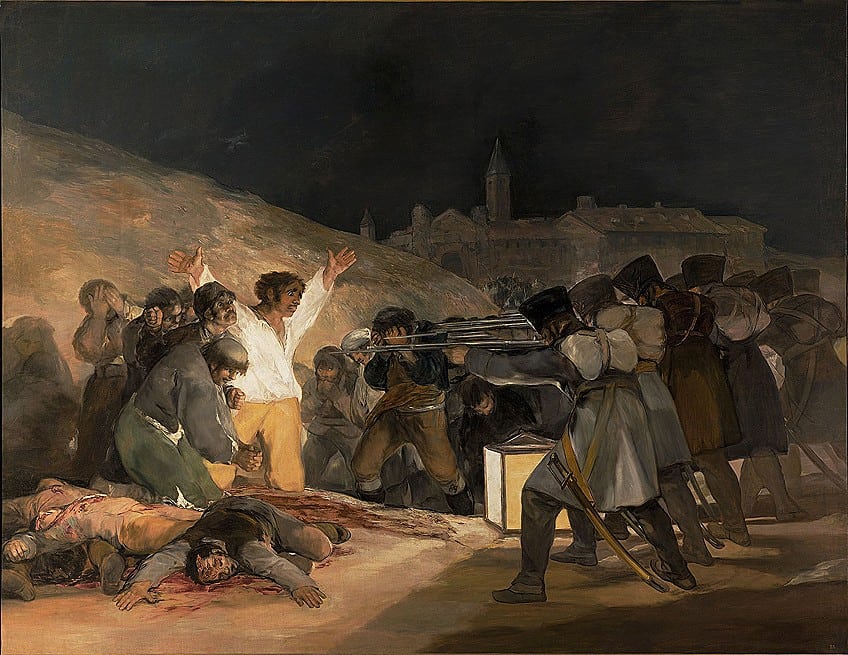
The Third of May 1808 (1814) by Francisco Goya, located in the Museo del Prado in Madrid, Spain; Francisco de Goya, Public domain, via Wikimedia Commons
The light from the lamp in the center is shining on the focal point, which is the man standing with his outstretched arms and facing the men on the right. Goya creates a contrasting interplay of light and dark in this oil painting, which also creates emphasis and sets the tense mood.
This leads to an important point when utilizing an art element like color, specifically value. If it is purposefully applied, it has the power to shape the visual narrative and evoke a spectrum of emotions. Value, when coupled strategically with color, can create calm and peaceful moods or dynamic compositions that make for dramatic paintings.
More than Colors: Art with Value
Beyond the physical application of paint on canvas or pencil to paper and the arrangement of colors and values, we cannot forget the inherent value that art provides. From cave art, church art, or Pop art, art has been in existence since the dawn of human origin.
It is one of our most natural forms of self-expression and exploration of ideas, concepts, and events that are close to our hearts.
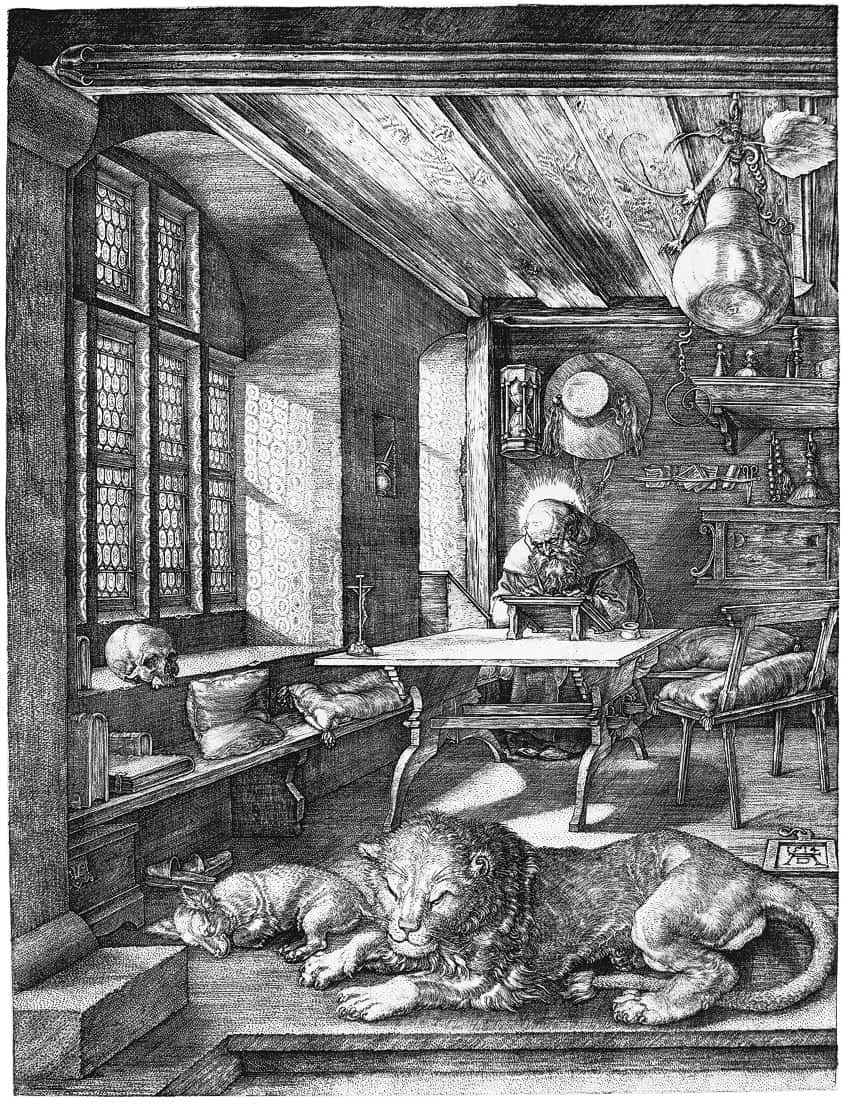
Artworks have also become sought-after legacies left by many great artists, now adorning museums and art galleries all over the world. There is art with a value that many pay millions of dollars to have in their private collections and art with a value that is priceless. These “priceless” masterpieces have acquired monetary and status-value over time due to their unique histories and innovative creators.
The Many Shapes and Sizes of Value in Art
Value is one of the tools we can use when it comes to utilizing color, which can apply to different media like paintings, watercolors, or drawings.

Waterloo Bridge (1900) by Claude Monet, located in the Santa Barbara Museum of Art in California, United States; Claude Monet, Public domain, via Wikimedia Commons
There are also several variations of value in art, referred to as high-key, low-key, and mid-range. Value adds effects like highlights and shadows, which create emphasis, perspective, depth, contrast, and so much more to a visual composition, thus giving it life. As such, one needs to carefully examine all the shapes and sizes of value in art to ensure that one makes the best out of this art element.
Value in art comes in many different shapes and sizes as we have illustrated with the above value in art examples. Value is considered an important art element to understand, and like many art enthusiasts and artists, we encourage you to grab a pencil and a sheet of paper and start practicing your hand at creating value in art!
Learn Everything about the Elements of Art
We have written a series about all the elements of art, if you would like to dive a bit deeper into the topic:
Frequently Asked Questions
What Is Value in Art?
Value is an art element, alongside color, texture, line, form, shape, and space. Value refers to how light or dark a visual composition is or the so-called lightness and darkness of a painting, drawing, watercolor, or graphic design.
What Are the Different Types of Value in Art?
There are different types of values in art. These range from the lightest value, which is the high-key value range, to middle-key values, and the darkest values, which is understood as the low-key value range. It is often described in terms of a grayscale with the different gradients ranging from white to gray and black.
Why Is Value in Art Important?
Value in art is often called the most important art element because it gives a visual composition character. It creates depth and three-dimensionality through shading and highlighting. It also adds emphasis and contrast, and can give a visual depiction more meaning beyond formal art elements like color, line, form, shape, space, and texture.
Alicia du Plessis is a multidisciplinary writer. She completed her Bachelor of Arts degree, majoring in Art History and Classical Civilization, as well as two Honors, namely, in Art History and Education and Development, at the University of KwaZulu-Natal, South Africa. For her main Honors project in Art History, she explored perceptions of the San Bushmen’s identity and the concept of the “Other”. She has also looked at the use of photography in art and how it has been used to portray people’s lives.
Alicia’s other areas of interest in Art History include the process of writing about Art History and how to analyze paintings. Some of her favorite art movements include Impressionism and German Expressionism. She is yet to complete her Masters in Art History (she would like to do this abroad in Europe) having given it some time to first develop more professional experience with the interest to one day lecture it too.
Alicia has been working for artincontext.com since 2021 as an author and art history expert. She has specialized in painting analysis and is covering most of our painting analysis.
Learn more about Alicia du Plessis and the Art in Context Team.
Cite this Article
Alicia, du Plessis, “Value in Art – In-Depth Guide with Examples and Overview.” Art in Context. July 6, 2022. URL: https://artincontext.org/value-in-art/
du Plessis, A. (2022, 6 July). Value in Art – In-Depth Guide with Examples and Overview. Art in Context. https://artincontext.org/value-in-art/
du Plessis, Alicia. “Value in Art – In-Depth Guide with Examples and Overview.” Art in Context, July 6, 2022. https://artincontext.org/value-in-art/.


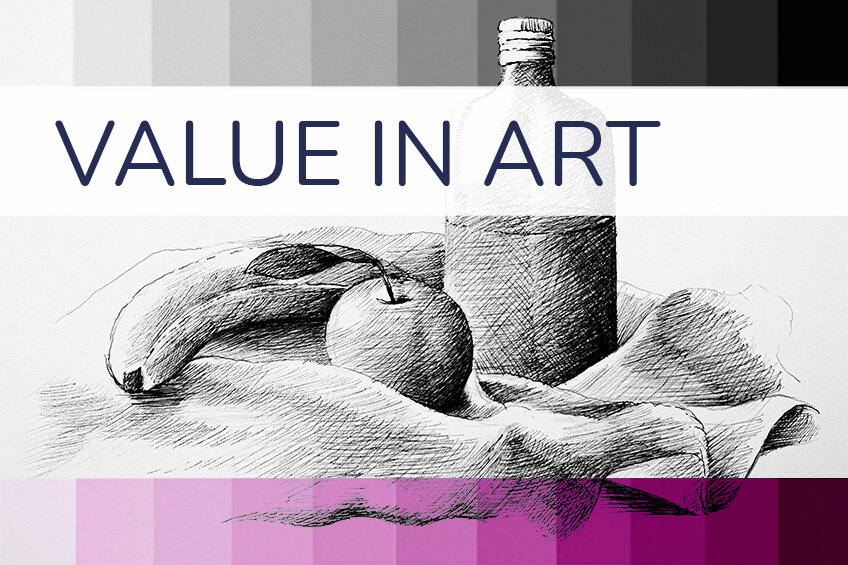

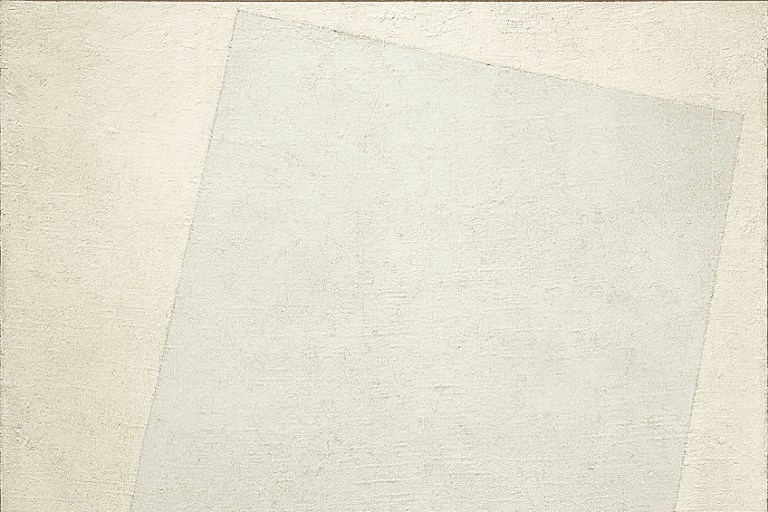
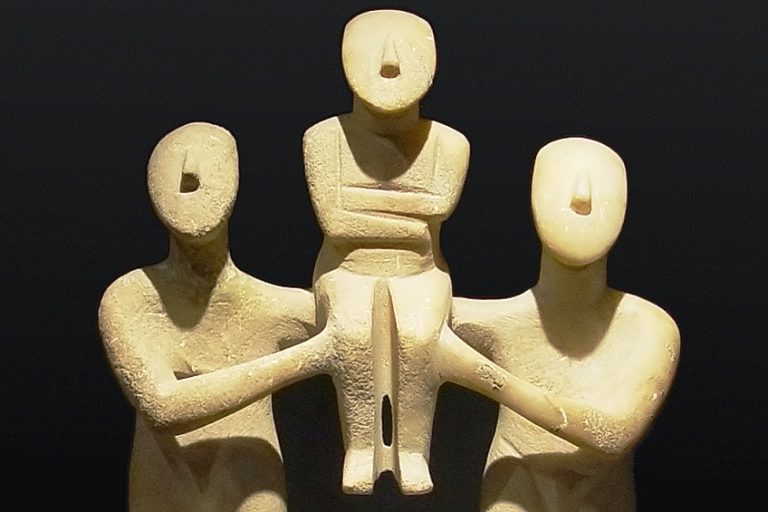



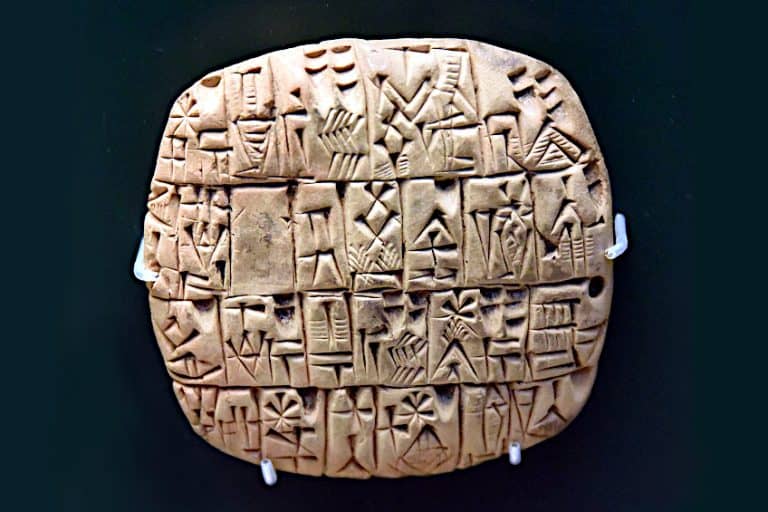



A very GOOD article, however I don’t know that I grasped it fully. I have trouble painting in 3-D. Hope I can find a more step by step approach. Thanks for all the work you put into this article. I think I need something more basic.